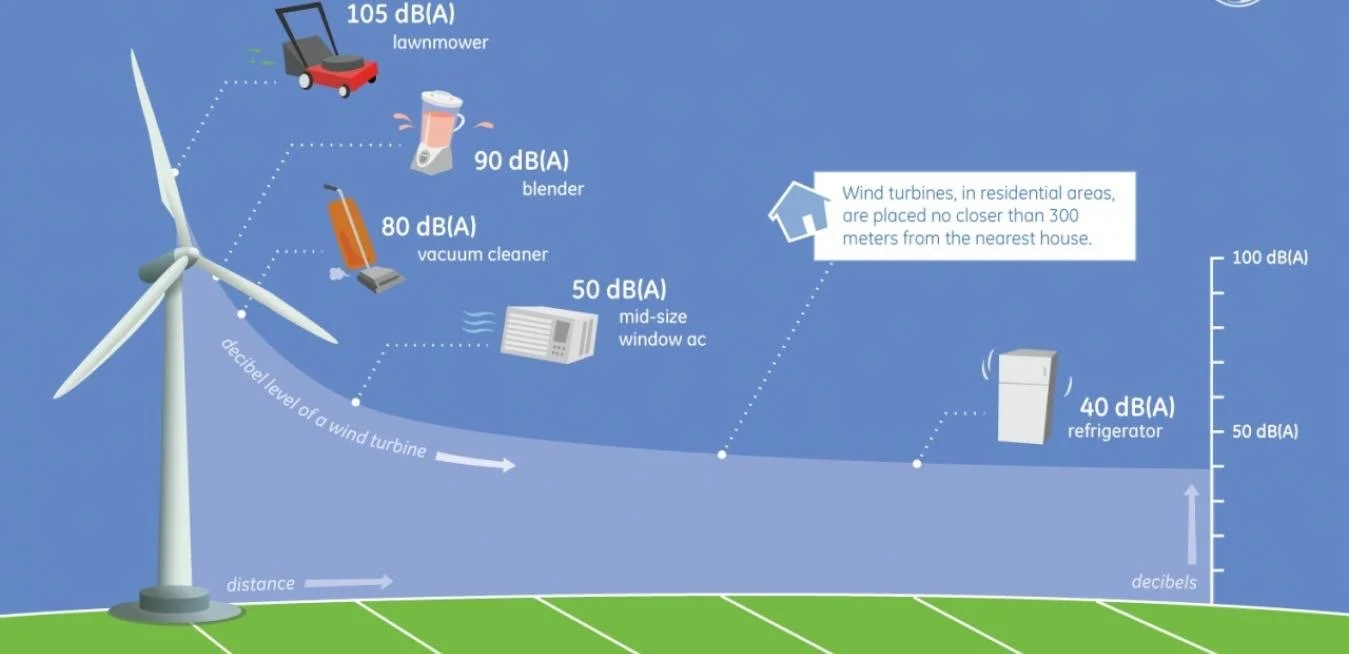How Loud Is A Wind Turbine?
Wind turbines provide a clean and sustainable power source for communities worldwide and have quickly become the most well-known renewable energy resource. Governments are expanding renewable energy infrastructure to support the growing demand for cleaner energy, and wind turbine farms have become a favoured source of renewable energy. However, as the number of wind turbines increases, there is growing concern about the noise they generate. Research suggests that anthropogenic noise from wind turbines may negatively impact wildlife populations, ecosystems, and neighbouring communities. The substantial development of renewable energy infrastructure, particularly wind turbines, has raised new concerns about the potential adverse effects of wind turbine noise (WTN) on wildlife, the well-being of nearby residents, landscape aesthetics, and real estate values.
In this blog, we will take a closer look at the issue of noise from wind turbines and explore what is being done to address it.
How Much Noise Do Wind Turbines Produce?
Wind turbines produce noise in two main ways. The first is from the mechanical components of the turbine, including the rotor blades, gearbox, and generator. These components create noise as they turn and generate electricity. The second source of noise is from the airflow around the blades, which can cause turbulence and create a whooshing or swishing sound.
The amount of noise produced by wind turbines can vary depending on a number of factors, including the size and type of turbine, the wind speed and direction, and the distance between the turbine and nearby homes or buildings. The latest wind turbines are designed to be as quiet as possible, with noise levels typically ranging from 35 to 45 decibels (dB) at a distance of 350 metres. To put that in perspective, a conversation at normal volume is around 60 dB, while a vacuum cleaner produces approximately 70 dB.
Image source. How Loud Is A Wind Turbine Noise Graph
What are the Health Effects of Wind Turbine Noise?
There is an ongoing debate about the potential health effects of wind turbine noise.
Wind turbine noise is the sound generated by the mechanical movement of the blades as they rotate. This noise can be heard up to several kilometres away from the turbine, and it can be particularly pronounced at night when background noise levels are lower. The frequency of wind turbine noise is usually low, ranging from around 20 to 200 Hz, which is below the threshold of human hearing. However, some people may still be able to hear the noise or feel its vibrations.
Some studies have suggested that prolonged exposure to low-frequency noise from wind turbines may lead to:
Sleep Disturbance - People who live near wind turbines have reported experiencing sleep disturbance. This can include difficulty falling asleep, waking up frequently at night, and feeling tired during the day.
Headaches - Some people have reported experiencing headaches or migraines that they attribute to wind turbine noise exposure.
Tinnitus - Tinnitus is a ringing or buzzing sensation in the ears caused by exposure to loud noise. Some people have reported experiencing tinnitus after being exposed to wind turbine noise.
Cardiovascular Problems - A few studies have suggested that long-term exposure to wind turbine noise may increase the risk of cardiovascular problems, such as high blood pressure and heart disease.
It is worth noting that the World Health Organization (WHO) has affirmed that there is no substantiated evidence to suggest that wind turbine noise poses any risk to human health. Many of these risks to human health can also be caused by exposure to other types of environmental noise, such as traffic or industrial noise. Additionally, some people may be more sensitive to noise than others, which means they may be more likely to experience these symptoms.
What is Being Done to Address Wind Turbine Noise?
The latest wind turbines are considerably quieter than the first models of the 1970s and 1980s. In particular, noise from the gears and generator has been reduced. The modern wind turbine's nacelle is noise insulated, and the generator and gears are mounted so that noise is dampened as much as possible. The design of the blades has been developed to mitigate noise. To continue addressing the concern of wind turbine noise, manufacturers are continuously exploring ways to design quieter turbines. This involves the development of new blade designs that minimise turbulence, as well as modifications to mechanical components to reduce noise further. Further innovations include:
Using upwind designs, which are less impulsive and noisy than downwind designs.
Streamlining towers and nacelles to reduce noise from wind passing the turbine.
Increasing soundproofing in nacelles to deal with mechanical noise from moving parts.
Redesigning turbine blades to improve efficiency and reduce aerodynamic noise.
Using specially-designed gearboxes with flexible gear wheels and sound-dampening buffer pads to reduce mechanical noise.
In addition, governments and industry groups have established guidelines for wind turbine noise levels, with many countries setting legal limits on the amount of noise that turbines can produce. These guidelines are intended to protect nearby residents from excessive noise while still allowing for wind energy development.

